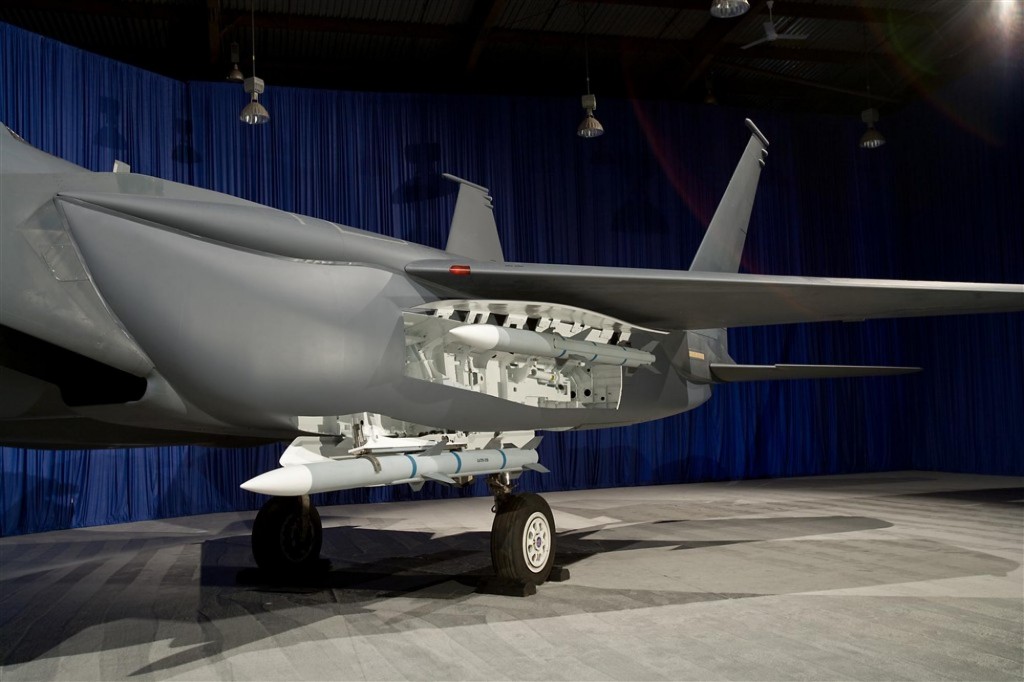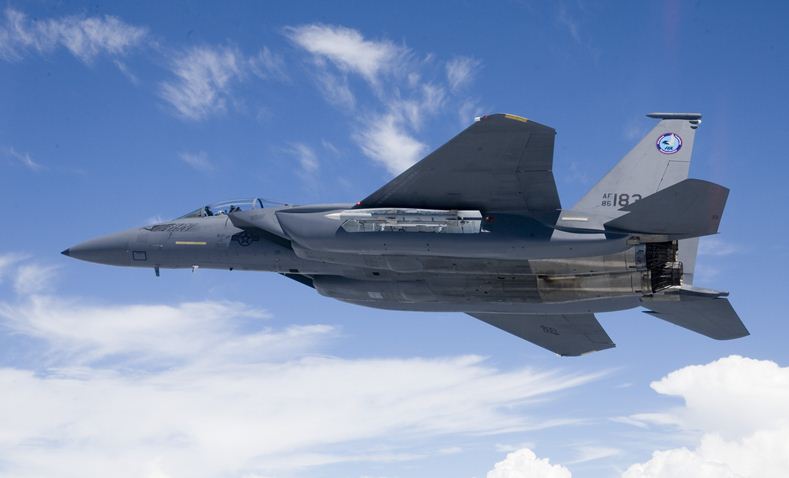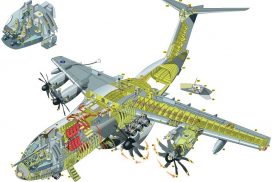Boeing unveiled a new version of F-15 called Silent Eagle, it’s a improvised stealth version of F-15 Strike eagle. F-15 is a world-class fighter aircraft. F-15 Silent Eagle’s continuous avionics upgrades could keep it competitive with super-fighters like the F-22. But the F-22’s distinct advantage is that the airframe was designed to be stealthy from the start.
While Boeing has done a few things to the F-15 airframe to reduce its radar return (submerged weapons carriage, an exportable radar-absorbent material coating on the airframe, and outward-canted fins,) it’s still a decidedly non-stealthy airplane. It’s still not quite a fifth-generation fighter, but it’s not intended to be. For instance, the F-15 Silent Eagle is not going to slip stealthily into defended airspace and wipe out a surface-to-air missile battery. That’s still the job of the all-aspect stealthy F-22 or B-2.
Techninal Specifications of the Boeing F-15 Silent Eagle
[komper pid=9 category=1 compareform=no]
Boeing optimized the F-15SE to reduce the aircraft’s head-on radar cross section. That’s not going to fool a ground-based SAM radar, but it will make it harder for an enemy fighter entering the merge to lock-on to your aircraft with a radar-guided missile. Boeing optimized the F-15SE to reduce the aircraft’s head-on radar cross section. That’s not going to fool a ground-based SAM radar, but it will make it harder for an enemy fighter entering the merge to lock-on to your aircraft with a radar-guided missile. Friendly foreign air forces have to face the question of whether they need stealthy combat aircraft in their arsenals. In scenarios like Afghanistan and the 2003 invasion of Iraq, stealth was not as vital a factor as it was in Operation Desert Storm because of the enemy’s degraded air defenses.

Stealth often becomes a hindrance because internal weapons carriage reduces the overall payload the aircraft can carry. It’s interesting to see if anybody is interested in buying the F-15 Silent Eagle, especially with the price of the F-35 rising. The F-35 was designed with an “affordable” degree of stealth in mind, but it’s quickly becoming as expensive as the F-22. “Silent Eagle” is the poor man’s F-35, sacrificing the F-35‘s level of stealthiness for affordability, superior maneuverability, a higher top speed, a dual crew, and twin-engine reliability.
Export markets of the Boeing F-15 Silent Eagle
Japan, Saudi Arabia, South Korea and Singapore are likely to be the target of Boeing’s F-15 Silent Eagle marketing. The countries already fly F-15’s but really want the F-22. With the US Congress prohibiting F-22 exports, Japan will likely settle for the F-35 unless Boeing can make a better offer (i.e., one that includes a higher degree of the plane’s production in Japan) with the F-15 Silent Eagle. Improvements in stealth over previous F-15 variants include coatings and treatments on the aircraft and there has also been a redesign of the conformal fuel tanks (CFTs) that allow for internal weapons carriage, says Boeing.
Depending on the specific mission, the customer can use the CFTs that are designed for internal carriage or change back to the traditional CFTs for optimum fuel capacity and external weapons carriage. The Silent Eagle will be able to internally carry air-to-air missiles such as the AIM-9 and AIM-120 and air-to-ground weapons such as the Joint Direct Attack Munition (JDAM) and Small Diameter Bomb (SDB). The standard weapons load used on current versions of the F-15 is available with the traditional CFTs installed. Boeing states that the aircraft’s canted vertical tails improve aerodynamic efficiency, provide lift, and reduce airframe weight. The go onto say that another aerodynamic improvement is the Digital Flight Control System, which improves the aircraft’s reliability and reduces airframe weight.

Survivability improvements include a BAES Digital Electronic Warfare System (DEWS) working in concert with the Raytheon Advanced Electronic Scanning Array (AESA) radar. Boeing has completed a conceptual prototype of the CFT internal-carriage concept, and plans to flight-test a prototype by the first quarter of 2010, including a live missile launch. The design, development, and test of this internal carriage system are available as a collaborative project with an international aerospace partner. Boeing says the F-15SE can match the frontal-aspect stealth performance of the export version of the Lockheed Martin F-35 Joint Strike Fighter.
The precise level stealth allowed to be exported to foreign countries is still to be determined by the US authorities who govern technology transfer rules. Boeing says they’re not offering the F-15SE to the US Air Force, but could the single-largest F-15 customer in the world be tempted? Obviously, the USAF is committed to buying a fifth-generation-only fleet of F-22s and F-35s, but if costs, schedule delays or performance problems start mounting, could the service be driven to “settle” for improved F-15s.




